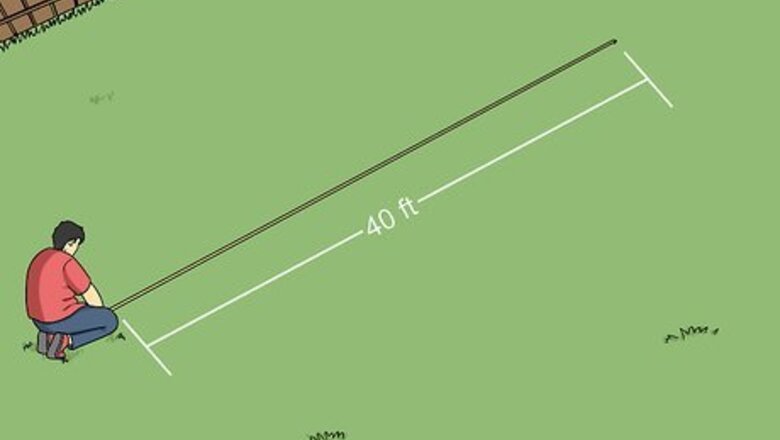
views
Learning to Play Horseshoes
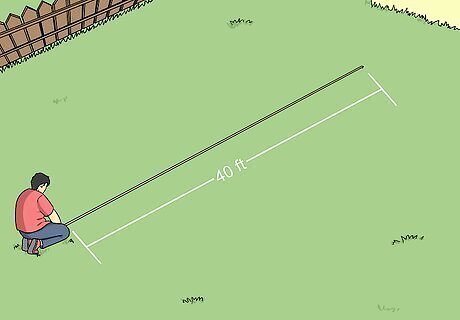
Find a long area of flat ground. Use a tape measure to measure a stretch of relatively flat ground, at least 30 feet (9.1 meters) in length and preferably 40 ft (12.2 m). This will be your horseshoe court. 40 feet (12.2 m) is the longest distance used in horseshoe throwing, and the most common in tournaments, but if you're playing for fun you can use a shorter distance. If the court is mainly for children, you might want to use a court as small as 15 ft (4.6 m) long, and consider putting two stakes side by side instead of on opposite ends of the court, to lower the chance of children hitting each other with the thrown horseshoes.

Pound two stakes into the ground. Use a mallet to drive two stakes into the ground, one at either end of the court. Tilt them about 12º toward each other, not straight into the ground. For a permanent horseshoe field, use long, iron rods, about 36 inches (91 centimeters) long and 1 inch (2.5 cm) in diameter. Otherwise, use any long stakes, ideally ones that extend about 15 inches (38 cm) above the ground after they're planted. 12º is a tilt approximately 1/8 of the way from vertical to horizontal.
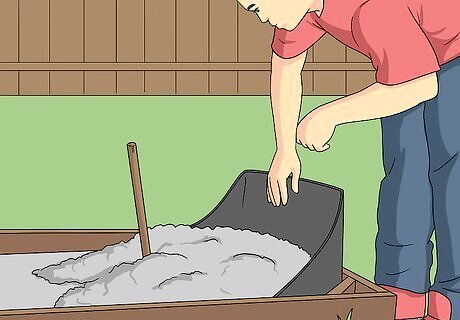
Improve the court (optional). You can skip this step and start playing immediately, or use these common methods to improve the stability and permanence of your court. If you want to minimize the number of slipping and bouncing horseshoes, you can dig a small pit of moist sand or moist blue clay around each stake. To keep the stakes firmly in position, bury a wooden log below the surface and drill an angled hole for the stake.

Decide where to stand. Typically, the game is played by two players or two teams, with one side standing at each stake and throwing at the other. In tournament play, adult men throw from behind a line drawn 37 ft (11.3 m) from the target stake, while women, people 18 and under, and people 70 and older may choose to throw from 27 ft (8.2 m) instead. If you're playing for fun, however, feel free to draw the lines as close as you need to so the players have a decent chance to throw a horseshoe near the target.
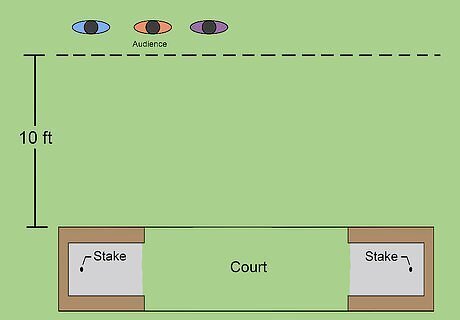
Clear the area around the target stake. Horseshoes are heavy and dangerous when thrown. Before throwing, always make sure everyone is standing at least 10 ft (3 m) from the court, and knows that a game of horseshoes is beginning.
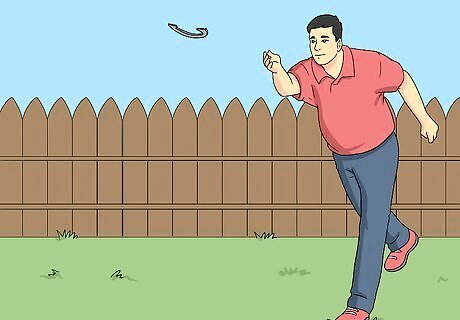
Have the first player throw two horseshoes. The first player throws two horseshoes, one at a time, trying to get them as near to the stake as possible. He then moves back away from the court, before the second player begins throwing. Throwing techniques are described in detail below.

Have the second player throw two horseshoes at the other stake. The second player steps up to the stake with his opponent's horseshoes lying near it. She aims at the opposite stake, throwing two horseshoes. In a team game, the players on each team take turns throwing a pair of horseshoes for their team.
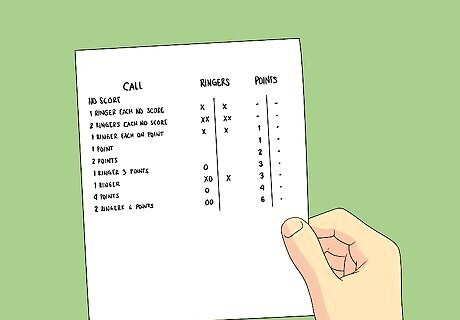
Keep track of score. In one common scoring system, each player gets 1 point for a horseshoe within 6 inches (15 cm) of the stake, and 3 points for each "ringer," with the arms of the horseshoe encircling the stake. Play until someone wins by reaching 20, 40, or 50 points, or any number you decide in advance. Alternatively, use the more competitive "cancellation" scoring system. Award 1 point each round to the player whose horseshoe is nearest to its stake, or 2 points if a single player throws both horseshoes closer than his opponent's. Ringers still award 3 points, but if both players throw a ringer in the same round, neither player receives points for it. Optionally, you can award 2 points instead of 1 for horseshoes that lean against the stake ("leaners").
Gripping the Horseshoe
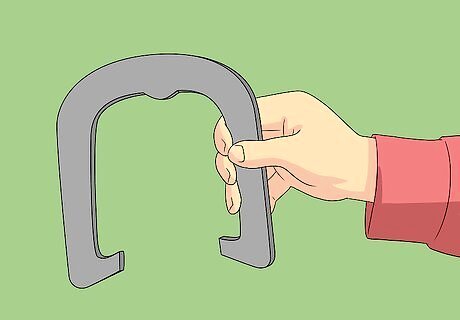
Try the 1¼ turn grip. This is the most popular grip among professional horseshoe players, thrown with the goal of rotating the horseshoe sideways 1¼ turns in the air, before it lands encircling the stake. Hold the horseshoe flat in front of you, with the arms, or "shanks," pointing to your left. Grip the horseshoe with your thumb on top of the closest shank. Keep your index and middle fingers underneath the shank, curling up onto the inner edge. Stretch your pinky finger out and press it against the horseshoe to balance your hold. The ring finger can be placed next to the middle or pinky fingers, depending on which grip you find more comfortable and steady. If you are left-handed, hold the horseshoe pointed to the right instead. Individual grips vary widely. Start with your thumb near the center of the nearest shank, then try adjusting it nearer or further from the bend to see which placement feels comfortable and accurate while throwing. Don't curve your finger around the U-bend of the horseshoe. As the famous player Roy Smith wrote in 1946, "that went out of style with the horse and buggy" and makes it difficult to control your throw.
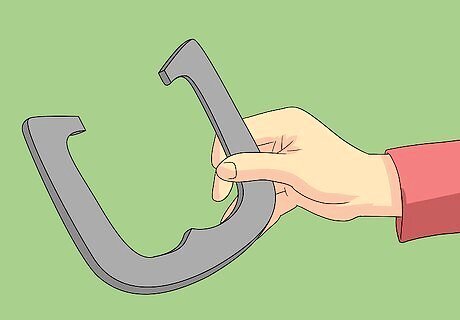
Try the ¾ turn grip. This grip is similar to the 1¼ grip, but the horseshoe's shanks are pointing to your right instead. Place your fingers and thumb around the bend of the horseshoe, instead of a shank. This grip uses different muscles to throw the horseshoe, which makes it more comfortable for some people, and less comfortable for others. Try to throw it with just enough strength and height so it turns sideways with a ¾ turn in the air, so it can encircle the stake from the front.
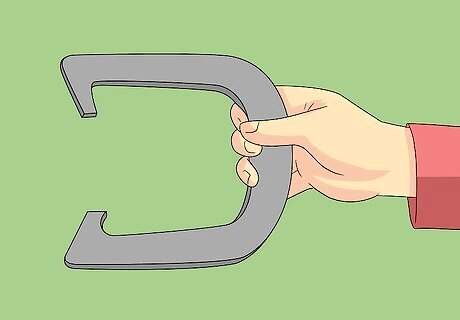
Try the flip throw. In this throw, the horseshoe spins "head over heels" instead of remaining flat during its flight. There are many variations of this grip, so feel free to experiment. It might be easiest to start by gripping the shoe at the center of the bend, with your thumb either on the top or bottom. This throw is often considered less accurate from the 37 ft (4.5 m) distance, but there are many experts who have had success with it. It may actually be more effective than the grips above when throwing from shorter distances.
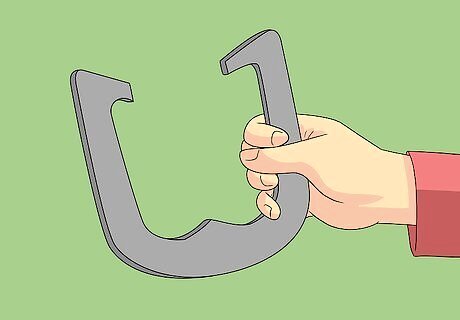
Hold the shoe firmly. Don't grip the shoe so tight that your wrist feels strained, but do keep it firm enough that the horseshoe doesn't slip out of your grasp too early. Use a lighter horseshoe to practice if your hand feels sore or painful.
Perfecting Your Throw
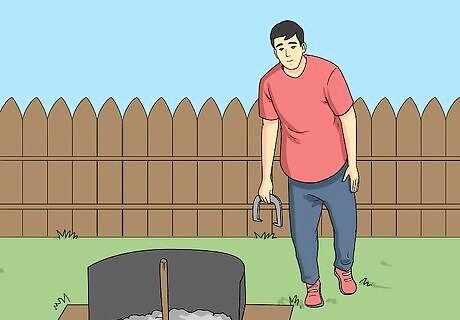
Learn the correct stance. If you are right-handed, stand to the left of the stake. Stand straight but relaxed, or slightly slouched if you find it more comfortable. Keep your shoulders squared in front of the stake you are aiming for. If you are left-handed, stand to the right of the stake.
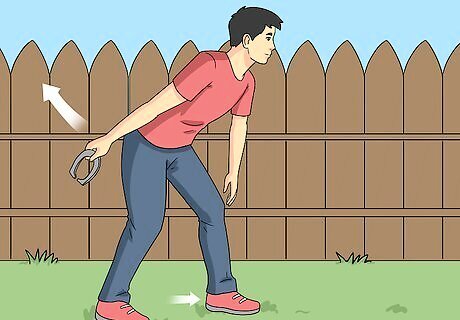
Swing as you throw. Pull the shoulder and arm holding the horseshoe back, in line with your body. Move your left foot forward as you throw. Keep your arm straight, with as little wrist movement as possible, or it will be difficult to control your throw. The rotation of the horseshoe can be produced just by letting the shoe slide in your grip slightly as you swing your arm Some players start a short distance behind the throwing line, and take a step or two forward before they throw. This technique may provide more throwing strength, but can take some practice to use accurately.
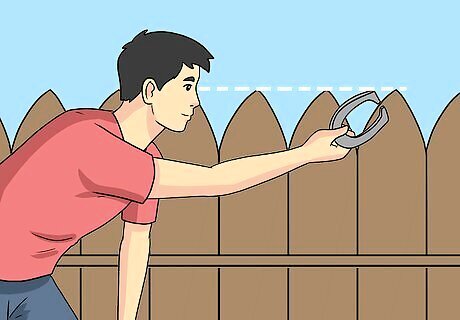
Follow through. Release the horseshoe when it is at roughly eye level in front of you. Prevent jerky movements and weak throws by following through, keeping your throwing arm moving up above your head after release.
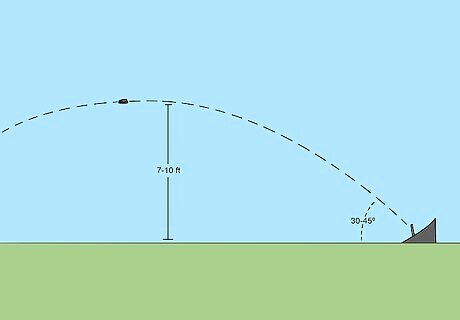
Get the right trajectory. Well-thrown horseshoes typically fly about 7-10 ft (2.1–3 m) high, then drop down near the stake at a 30–45º angle. If your stake is surrounded by sand or gravel, as many backyard stakes are, a lower, more forceful throw can land in front of the stake and slide onto it. This can develop bad habits if you plan to play in tournaments, which use clay instead of sand, but it's a fine strategy for casual players to use. A slight "wobble" in the horseshoe as it flies will help it land correctly, if you are using a "turn" throw instead of a "flip" throw. Try adjusting the position of your thumb to alter the amount of wobble.

Practice the right amount of turn and throw strength. It can take some practice to figure out a grip that feels right, and to learn how hard to throw the shoe. Practice the release time and amount of turn in your horseshoe until you can consistently land the horseshoe in front of the stake, with its shanks facing the stake. Once the right amount of rotation and throw strength is unconscious, you can keep practicing your throws for accuracy and attempting to make ringers more often. Painting your horseshoes may make them easier to watch in the air, which can help you practice your turn. Videotaping the horseshoe's flight is another option.




















Comments
0 comment